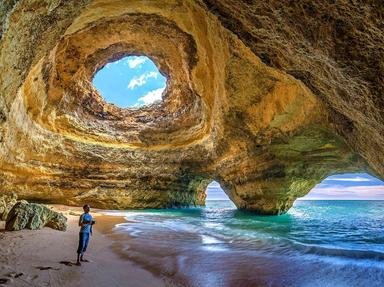Quiz Answer Key and Fun Facts
1. What was the name of the Roman province that occupied most of the territory of modern Portugal?
2. Which of these Romance languages, spoken in a neighbouring region, is most closely related to Portuguese?
3. What flower is associated with a defining moment in Portugal's 20th-century history?
4. In the 15th and 16th century, Portugal was at the forefront of the exploration of unknown parts of the world. Which of these famed Portuguese explorers discovered Brazil?
5. Magnificent monuments such as the iconic Tower of Belém (shown in the photo) are examples of what ornate, late Gothic style, named after a king?
6. One of Portugal's UNESCO World Heritage Sites is a natural heritage preserve known as "laurisilva". On which island in the Atlantic Ocean, one of the country's two autonomous regions, would you find it?
7. Portugal is known as one of the world's biggest producers of wine, and also of what related product?
8. Portugal's rich literary tradition was rewarded in 1998, when the author of the controversial novel "The Gospel According to Jesus Christ" received the Nobel Prize in Literature. What is this great writer's name?
9. Who was the most famous of the Portuguese "fado" singers, nicknamed "the queen of fado"?
10. The Portuguese love their pastries and desserts. How are the traditional custard tarts in the photo called?
Source: Author
LadyNym
This quiz was reviewed by FunTrivia editor
trident before going online.
Any errors found in FunTrivia content are routinely corrected through our feedback system.
